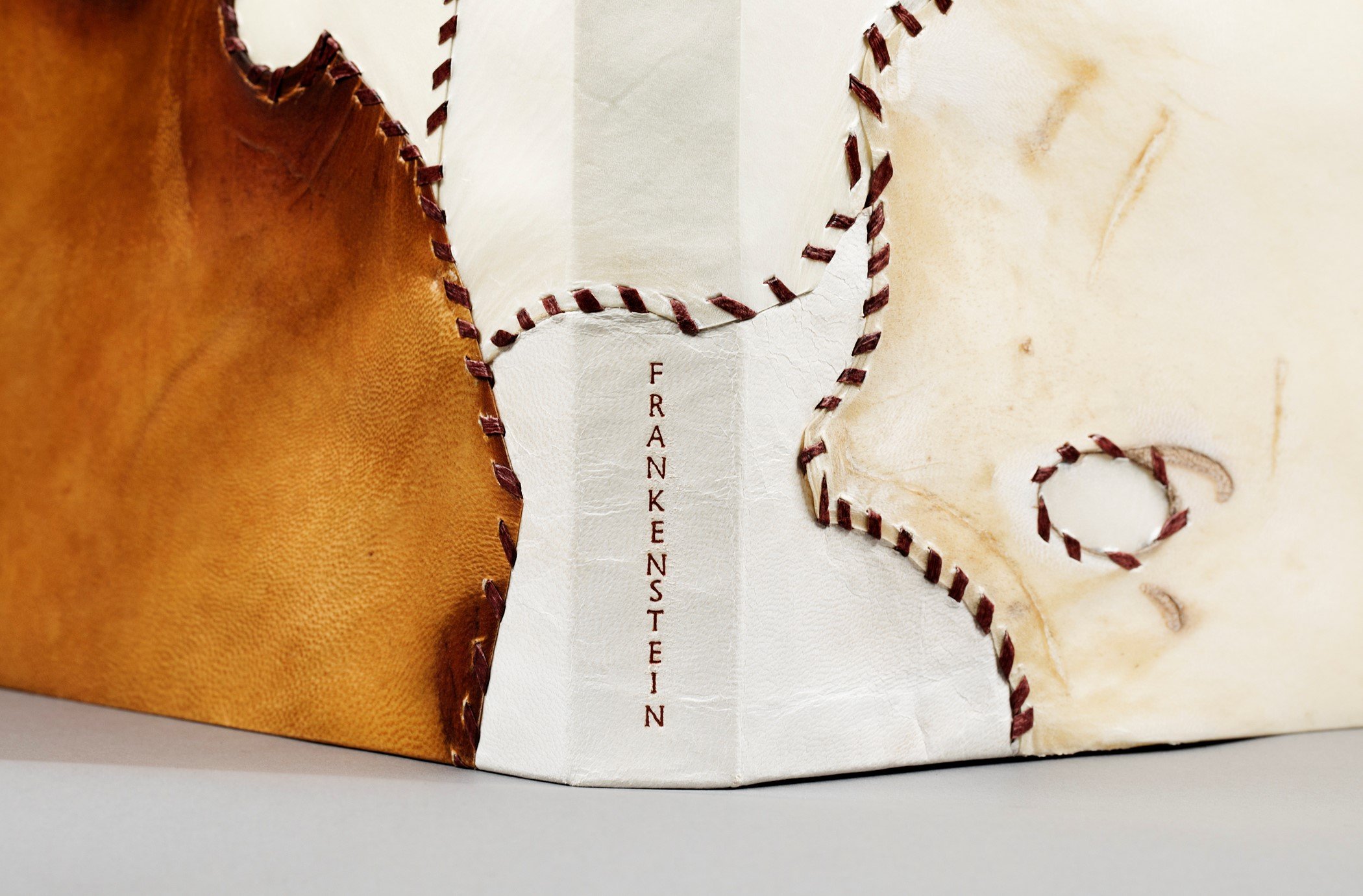Is it wrong to judge a book by its cover? Undeniably, a first encounter with any text is shaped the book’s outward appearance. A book’s spine, covers, edges, even its shape, all say something about where that particular text comes from, who it may be speaking to, and how it may be regarded by the people who made it, bought it, sold it, and owned it—now and in the past. A Book by Its Cover examines the development of bookbinding in the West and considers how innovations in structure, decoration and design are used to transform a book’s paratext into an essential part of the textual whole. Works on view include treasure bindings, fine bindings from the Guild of Women Binders, and artist’s bindings – Karen Hanmer’s patchwork binding for Mary Shelley’s Frankenstein, for example—in which the books’ covers can be read as integral to the narrative texts they envelop.
Wollstonecraft Shelly, Mary
Frankenstein, or the Modern Prometheus, with woodcut illustrations by Lynd Ward
Lakewood, CO: Centipede Press, 2006
Bound by the artist Karen Hanmer, 2018
Binding: The construction of this binding mirrors Dr. Frankenstein’s process: forming one creature from parts of many. Limp vellum binding based on the non-adhesive “clip-on cover” structure developed by Kathy Abbott. Text block sewn long stitch into veiny calf vellum wrapper; covered in limp vellum case of deer, calf, and goat (some dyed by the binder); pieces stitched together with vellum laces; tabbed corners. Graphite head, hand titling in foil, Bugra flexi endpapers.

